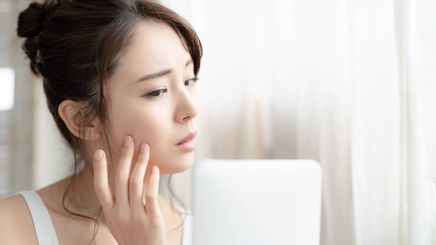
One morning you look in the mirror and notice the unwanted side effects of a new product on your skin. In your horror, your skin has tiny, red bumps, which are painful when touched. You suddenly have whiteheads and blackheads, too. It looks like a breakout, but it’s actually skin purging. Let’s talk about the difference.
Skin Purging vs. Regular Breakouts
Skin purging occurs when you use a new skincare product to which your skin needs to adjust. Usually, that product contains ingredients that can speed up cell turnover. As your skin gets used to these substances, dead skin cells build up on the surface and cause breakouts. We can't blame you if you get turned off from a moisturizer or serum after this effect. However, don't lose hope! Skin purging is a temporary and essential step in the process.
On the other hand, based on the Journal of Clinical and Aesthetic Dermatology, factors, such as , excessive oil production, bacteria, or irritation from a product can trigger regular breakouts. Since the symptoms look similar, distinguishing skin purging from breakouts can be challenging. Here’s a handy guide to tell the difference.
Where are you “breaking out”?
According to a study by the British Journal of Dermatology, the effects of skin purging often manifest in areas where breakouts usually take place. Don’t worry! The Clinical Interventions in Aging Journal cites that purging is the first sign that you’re using a suitable product that matches your skin’s needs.
On the other hand, breakouts can occur in areas where you have inflamed, clogged pores, which can be anywhere on your face. Notice a new pimple in a new spot? You might be experiencing irritation or a regular breakout.
How long does it last?
Skin purging is not forever. In fact, this type of breakout clears up faster than a regular one, as stated in the journal Molecular Biology of the Cell. Moreover, pimples from purging don’t leave marks on the skin. While it differs per person, purging usually lasts about a month (which is the length of a regular cell turnover cycle of 28 days).
However, if what looks like skin purging continues past six to eight weeks of prolonged product use, it might be a sign to change things up. That product may be irritating or too harsh on your skin, or it’s simply not what your skin needs at the moment.
What ingredients are in your products?
Certain ingredients trigger purging. Based on the International Journal of Clinical Practice review, active ingredients and treatments that increase skin turnover include hydroxy acids, retinoids, benzoyl peroxide, chemical peels, lasers, microdermabrasion, and other such as scrubs. These ingredients and treatments trigger skin purging because they help reveal new skin cells. Detox and other sheet masks can also launch a purge if they contain any of these ingredients.
How to Deal with Skin Purging
Unfortunately, if your skin is meant to purge, it will. There is no shortcut and you’ll just have to trust the process. Since your skin is vulnerable and sensitive when it is purging, you can help it by not popping pimples and avoid touching your face to prevent infection that can lead to scarring. Use gentle products to help your skin heal. As per advice in The Evolving Role of Skincare journal, don’t find ways to further irritate your skin.
Try a cleanser like POND'S Bright Miracle Ultimate Acne Control Facial Foam, which is formulated with Active Thymo BHA, a natural ingredient to reduce inflammation. The essence also fights pimple-causing bacteria to eliminate acne at the root.
Skin purging is a normal process that the skin goes through when an active ingredient triggers cellular turnover. Now that you know how it differs from a regular breakout, you can make better choices for your skin. Ditch products that are irritating your skin and stick to the ones that work for you.